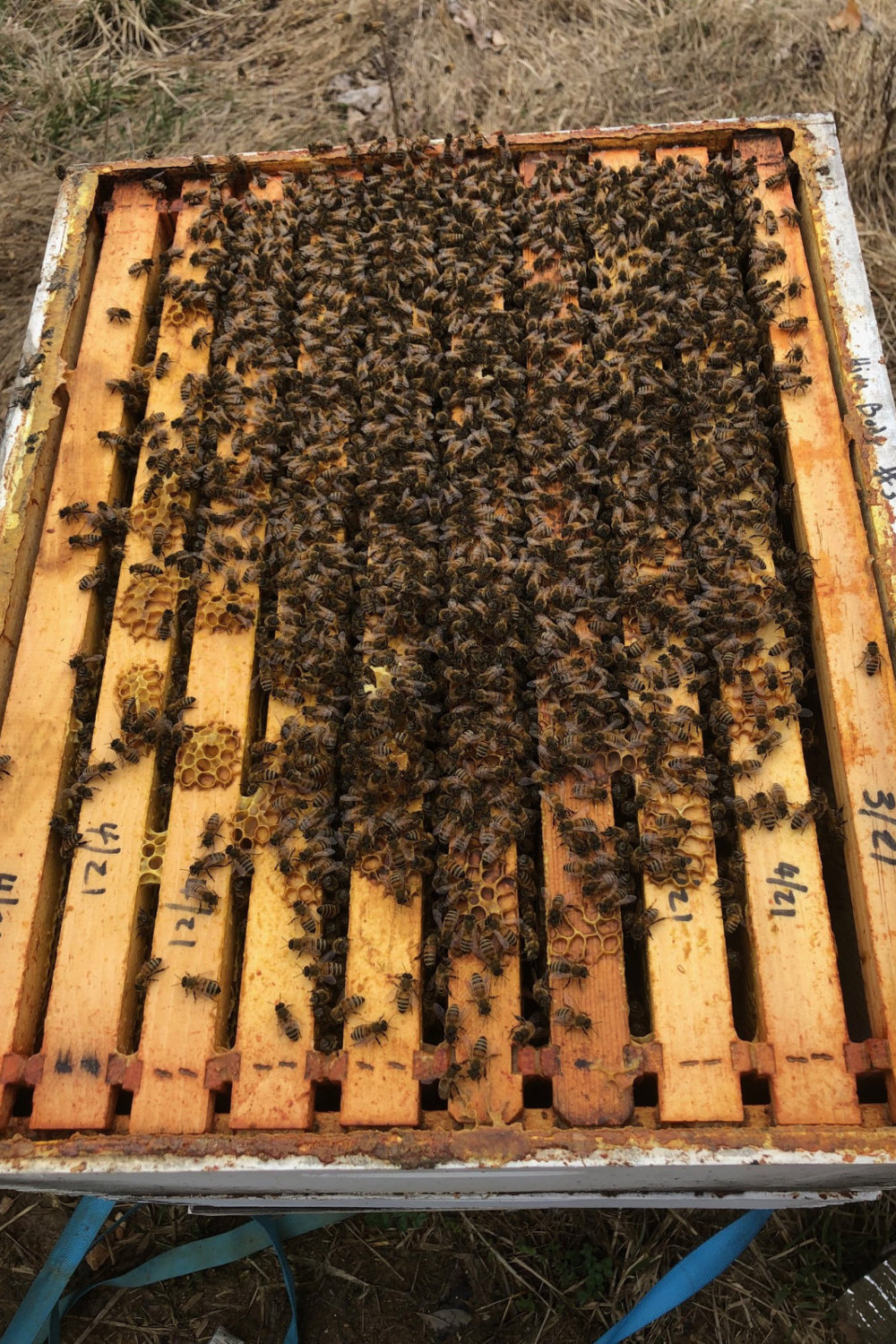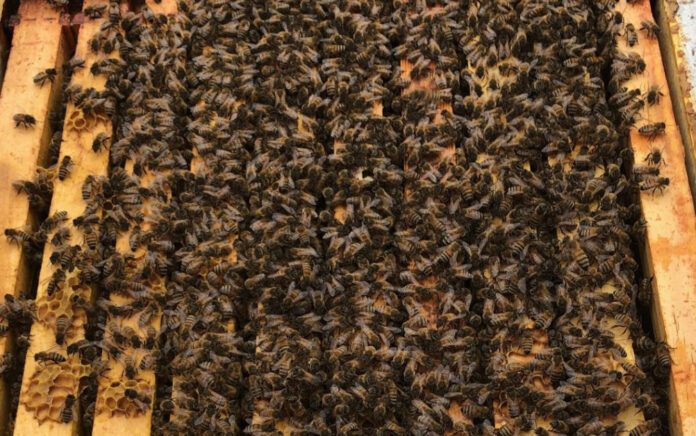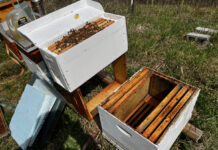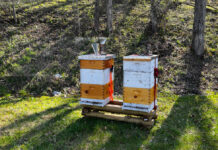Note: This article includes statements about bees that apply in my geographic area and altitude in the Appalachian Mountains. Please keep in mind that bees in your neck of the woods might behave differently because of seasonal and weather differences.
As an aside, let me mention that in August 2022, I reported that the Farmer’s Almanac predicted “an extremely cold winter over much of the U.S., especially for the Southeast, South Central states, the Great Lakes area, the Northeast and North Central regions.” Wrong! They also predicted California would be drier than normal. Wrong again! Parts of the Mid Atlantic and North East have seen little or no snow and friends in Western Pennsylvania said it was in the 70s earlier this week.
This is the time of year I remember from childhood as having the biggest and best snow storms. The past two winters, we had snow almost weekly. Not this year.
We are experiencing an early spring with temperatures higher than they should be. I took advantage of an unusually warm day to check on the bees and was pleased to see that all six hives are doing well. Perhaps too well.
The warm weather is encouraging the bees to build up their hives. This could be good or it could be bad, but it definitely requires careful management by the beekeeper.
Rapid Hive Building
Unlike wasps and yellow jackets, honey bees stay alive over the winter, clustered together in a sphere to keep the queen warm and eating their stored resources. This is why we don’t harvest all the honey and leave plenty for the bees.
Queen bees slow their egg laying as the days grow longer. Around Christmas, the hives are usually broodless, which is when we treat with oxalic acid vapor to control Varroa mites. After the winter solstice, the queen starts laying eggs again. Because the eggs, larvae and pupae (known as brood) require temperatures of around 95 degrees, she doesn’t lay many eggs on cold winter days. In traditional winters, most hives might have a small cluster of bees keeping a small circle of brood warm. Instead of multiple frames of 1200 or more cells filled with brood, there might be 200 on a frame or two.
When I opened hive number one, which has never been my strongest hive, the number of bees that greeted me at the top of the frame, as seen above, was a surprise. This is how a hive should look in late March, not mid-February. With some trepidation, I opened the other five hives and poked around. While none of them had this many bees, they were all strong.
Too Much of a Good Thing
Right now, nothing is blooming, meaning that’s a lot of bees with no external food source. Our snow drops are up but not blooming. The daffodils have sprouted but are nowhere near blooming. None of the trees that provide so much bee feed in the early spring are producing buds. They will have to eat their stored honey.
If the early spring continues and we see the tops of maples trees turn red, dandelions bloom, and other early sources of pollen and nectar, the excess of bees won’t be a problem. However, if we get sub-freezing temperatures for a week or two in early March, that could be a problem because the cold will kill off the buds and may prevent those trees from flowering later in the spring.
For example, if apple trees bloom too early and then get hit with 20° temperatures, not only do the bees lose a valuable source of food, the local orchards could lose the fall crop.
If it stays warm, then we get an early and hopefully lengthy honey season. But what are the odds of it staying warm? Not very good. I don’t care how screwy the jet stream and the weather has been this year, I don’t see us going through March without a week or two of winter and a snow shower or two into April. Our micro climate is colder, and we usually get frosts well into May and most locals don’t put their tomatoes out until June 1.
Hungry Bees
Not only does a return of winter endanger early blooming trees, it stresses the bees. I’m not concerned that they will freeze; I’m concerned they will starve. The bees will cluster and keep themselves warm, but when you have three times the number of bees in your cluster, they need three times the amount of food.
It’s years like this that inexperienced beekeepers lose hives to starvation in March or April and experienced beekeepers spend a fortune on food. The inexperienced bee keeper will scratch their head and think, “But they looked so healthy in February. What could have happened?” They starved because they ran out of food.
I took advantage of the weather and fed five of my six hives. (The sixth hive had so many honey stores I didn’t think it was necessary.) In the spring, you normally feed one-to-one sugar syrup, meaning equal amounts of sugar and water mixed together. Since it is still winterish, I mixed a ten pound bag of sugar into a gallon (8 pounds) of water, making it slightly richer. It made almost two gallons, meaning each hive got about three pints of syrup.
The bees will consume this if they are hungry and process it into honey when it is above 50 degrees.
I am now committed to keep feeding them when it is warm. If we continue to get days when the thermometer reached 60°, I’ll start giving them pollen patties. That will help the queens produce even more. By mid-March, I should have hives ready to split.
I better start building some hive stands and expanding my electric fence.








